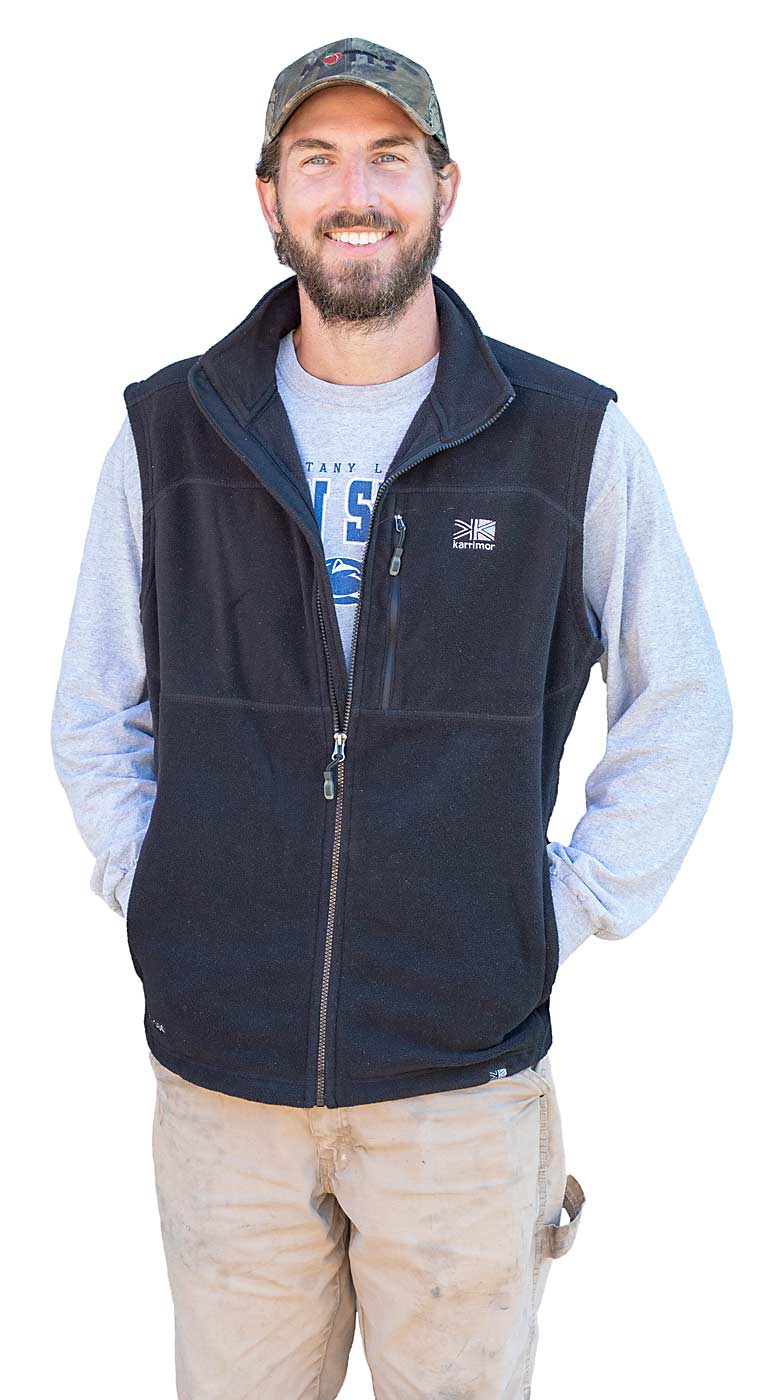family background/ Benjamin is a fifth-generation grower who graduated from Penn State University and is the past president of the State Horticultural Association of Pennsylvania. He’s the son of Marie and Richard Keim.
age/34
grower/Boyertown, Pennsylvania
crops/Apples, peaches
business/Keim Orchards
What were some of your early lessons?
One of the most interesting jobs I had when I was young was doing spot treatments for yellow toadflax weed control. My dad decided that I needed a learning experience.
It wasn’t everywhere through the orchard, so he sent me out with a three-gallon backpack sprayer to: one, successfully identify the weed; two, apply the treatment with the backpack instead of the tractor; and three, test what my true interest was in the farm and my work ethic.
I also learned that when you’re going out to spray, especially an herbicide, you must identify what’s out there to truly make it effective.
As I got older and was entering fruit in the county fair, that’s what helped me realize growing fresh-market apples and peaches was what I wanted to focus on as a career.
What did you do after high school?
First thing was deciding whether I wanted to go right into farming after high school or did I want to go to college to get a broad education that included business. I decided on Penn State, which allowed me to double-major in horticulture and landscape contracting.
It was beneficial getting my degree because it allowed me to learn things from other industries, and I also brought my working knowledge from the farm to my plant science classes.
What things did you find valuable during college?
One unique college experience was working at a Christmas tree farm. It gave me a new perspective on operating a different type of long-term crop and comparing how they manage labor to how we manage labor.
There’s also been a shift toward high-density plantings on the East Coast, and I was fortunate to see new research about it when I was in college. During the winters, I was able to come back to the farm and help plan out what our future orchard was going to look like. I was able to take that first-hand knowledge and research and incorporate it right into our business structure.
How did working with researchers help you?
In college, most times when you’re working on research projects, they are very analytical, whereas when you’re working in a commercial block there are more intangibles.
I learned to take those scientific principles and applied philosophies back to the farm and combine them with my practical knowledge to help me make better choices.
At annual meetings and extension gatherings, I can understand how researchers approach their trials, what truly worked and didn’t, and see areas within the research that could benefit our farm.
How are you planning for the future?
What helped us the most with our future plantings was having an economic plan that looked at varieties and return on investment. Regarding our layout and engineering of those blocks, we spoke with about five different growers who had started high-density modern plantings about what they liked, and more importantly, what they didn’t like.
So, as we began to design our trellises, we incorporated ideas from several different growers around the state, as well as New York, to figure out a trellis design that worked best for our environment and equipment.
I give credit to those growers and the research from Penn State for helping us get going into high-density plantings.
What are you excited about now?
The things that I’m most excited about going forward are how we evaluate and handle harvest. Here in the East, I feel most plantings are hitting the top end of our capable yield per acre.
I’m not sure that the rootstocks we have available will help us change that number; however, a little tweaking with architecture and density might help. I’m excited to see how we begin to incorporate technology, whether it’s robotic harvest or harvest assist platforms and vacuum harvesting.
At our farm, we’ve begun to add soil moisture sensors to our peach blocks at different depths. We’re incorporating that technology to figure out how to better irrigate and dial in the best fruit size.
How we use technology is going to be a critical component of what’s going to drive the industry. At the same time, I’m not willing to jump in with both feet.
What advice do you have for other young growers?
I think one of the best things a young grower can do is trial different things out on a small scale and see if they work for your operation.
It gives you a vested interest when running a small trial project, and then, if it does work, you have an opportunity to incorporate it into the rest of the farm.
—TJ Mullinax







Leave A Comment